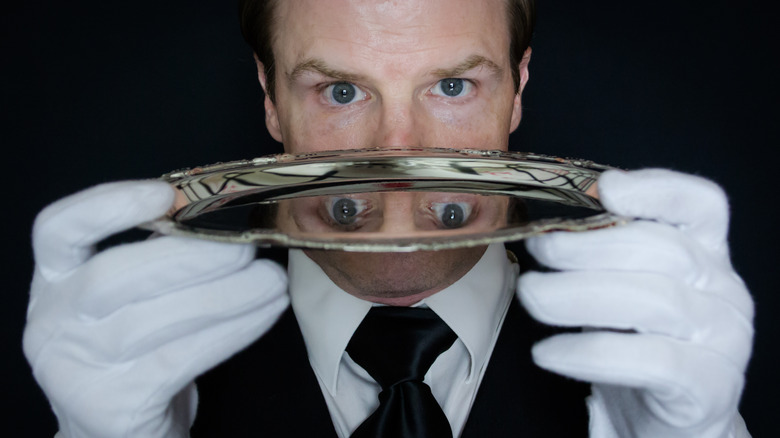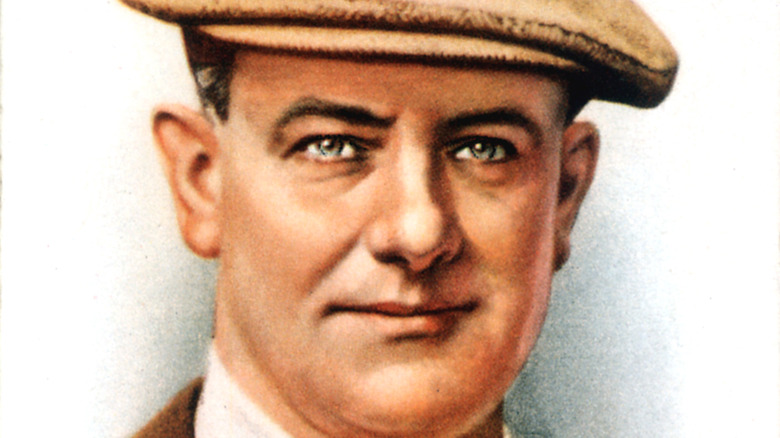Where Did The Phrase The Butler Did It Come From?
"The butler did it" may be one of the most famous tropes in mystery novels, but there are a surprisingly small number of well-known books that feature a butler as the main perpetrator of a crime.
One of the best-known mystery writers, Sir Arthur Conan Doyle, creator of Sherlock Holmes, may have been the first to do it. In his 1893 Holmes story "The Musgrave Ritual," the butler is not the murderer, but dies in the process of trying to steal from his employers. In 1921, Herbert Jenkins wrote "The Strange Case of Mr. Challoner," in which the butler was a murderer and the main villain (via Mental Floss).
Not long afterwards, in 1928, mystery writer S.S. Van Dine wrote a list titled "Twenty Rules for Writing Detective Stories" (posted at Wired), in which he said a writer shouldn't choose a servant as their primary villain. His elitist take was that this was an easy way out, and "the culprit must be a decidedly worth-while person — one that wouldn't ordinarily come under suspicion."
Mary Roberts Rinehart
American mystery writer Mary Roberts Rinehart, known as "the American Agatha Christie," broke Van Dine's rule only two years later in her book "The Door," in which the butler is the murderer. Although the phrase "the butler did it" is associated with this book, it doesn't actually appear in the text. The book was popular but was also lampooned for having such an obvious ending.
According to the Pittsburgh Post-Gazette, years later, Rinehart ended up in a situation not unlike one of her books: Her personal chef of 25 years tried to kill her. He was angry that she hadn't promoted him to be her butler. She was able to escape initially, when his gun jammed, but the chef chased after her. A chauffeur took him down while a maid took his gun and Rinehart called the police. The chef got away from the chauffeur and chased Rinehart again with two kitchen knives instead. A gardener helped the chauffeur immobilize him again. Her actual butler fled the scene instead of helping (via Mental Floss and the Pittsburgh Post-Gazette).
Damon Runyon & P.G. Wodehouse
Only three years after "The Door," Damon Runyon (writer of "Guys and Dolls") satirized the trope in his short story, "What, No Butler?"
The phrase "the butler did it" may have become even more common thanks to humorist P.G. Wodehouse (above). His 1957 novel about Keggs the butler was published in the U.S. as "The Butler Did It" (in the U.K. it was called "Something Fishy"). While Keggs isn't a murderer, he does blackmail his former employer with information he heard while eavesdropping 30 years earlier (via Russian Wodehouse Society).
Wodehouse was famous for creating another popular butler character, Jeeves. Far from being a criminal, Jeeves was clever and was constantly rescuing his employer, Bertie Wooster, from complex dilemmas, according to Britannica. Still, the Wodehouse-butler association may have further popularized the phrase. Overall, though, it seems as though most of the time in mystery writing, the butler didn't do it after all.


